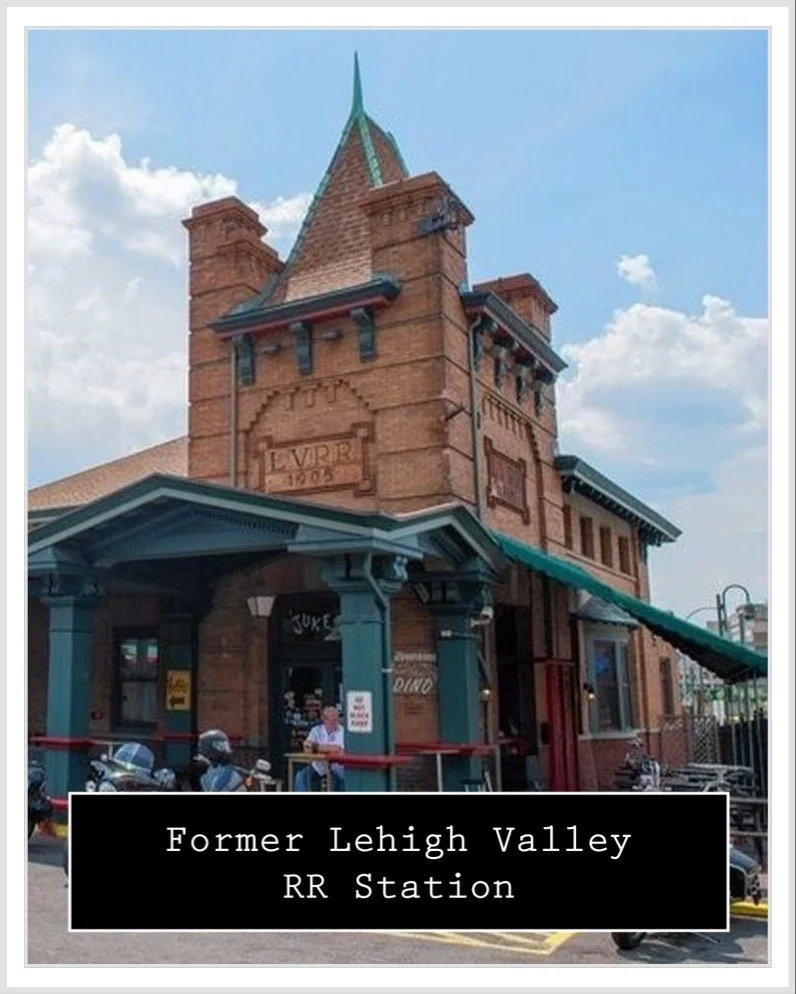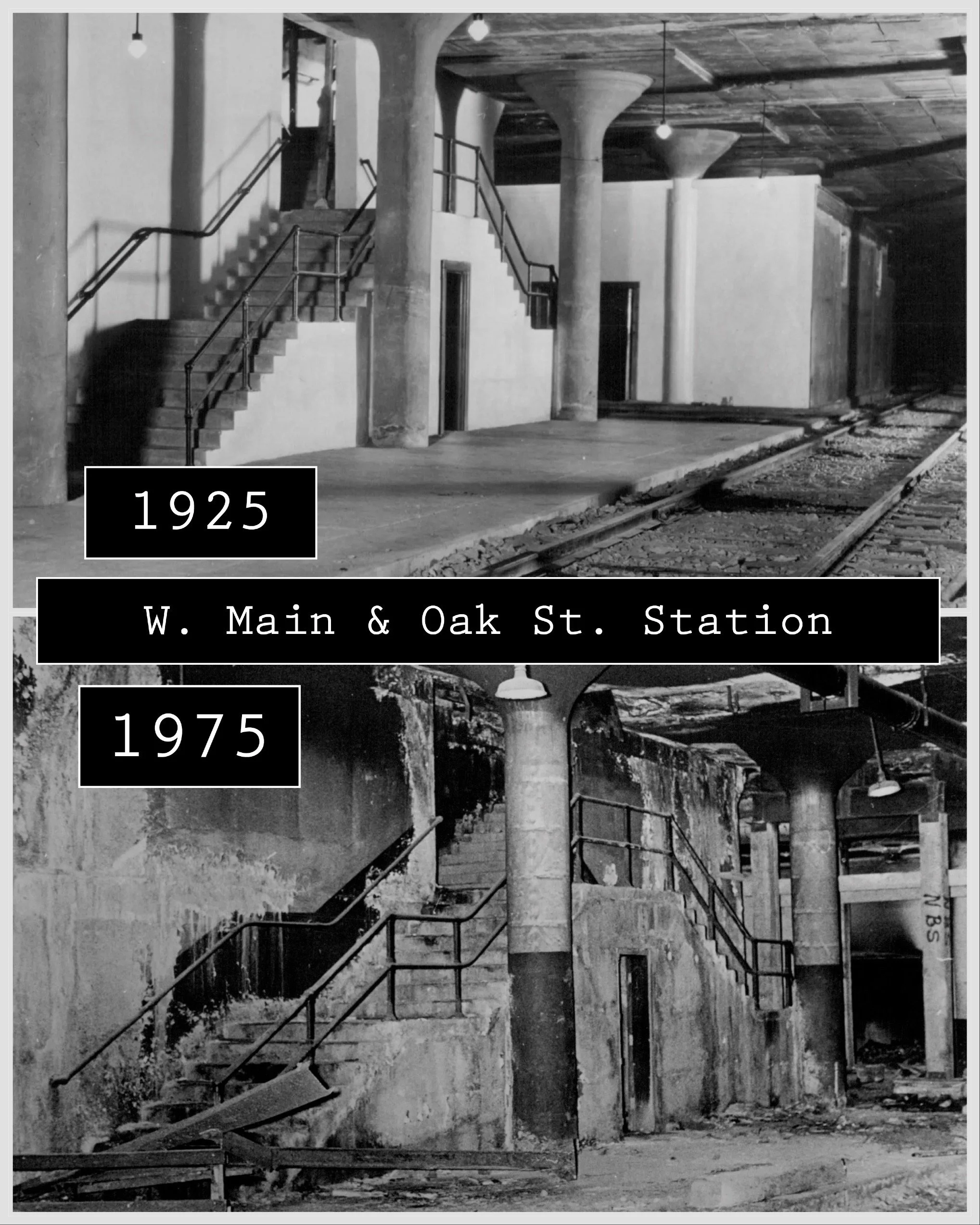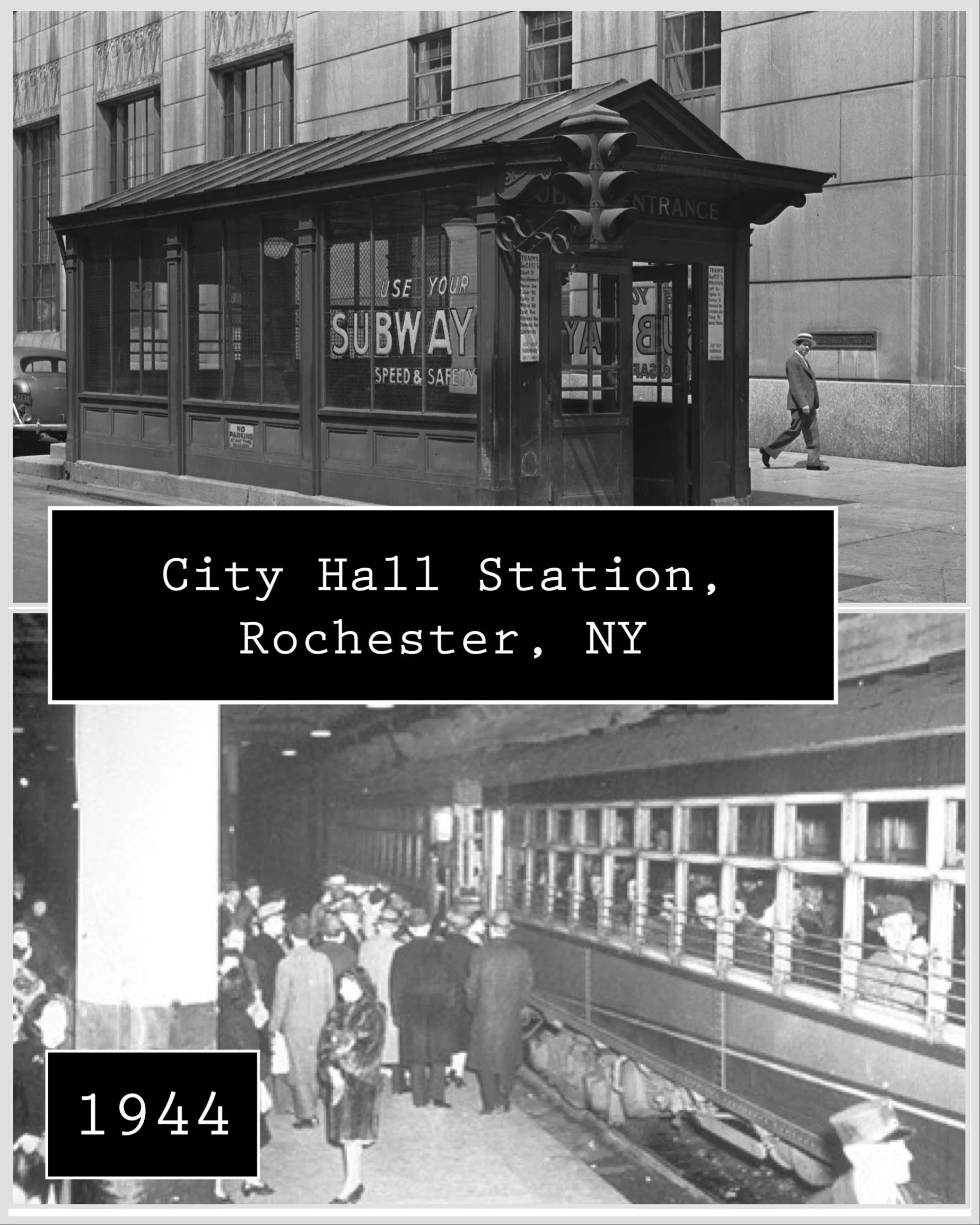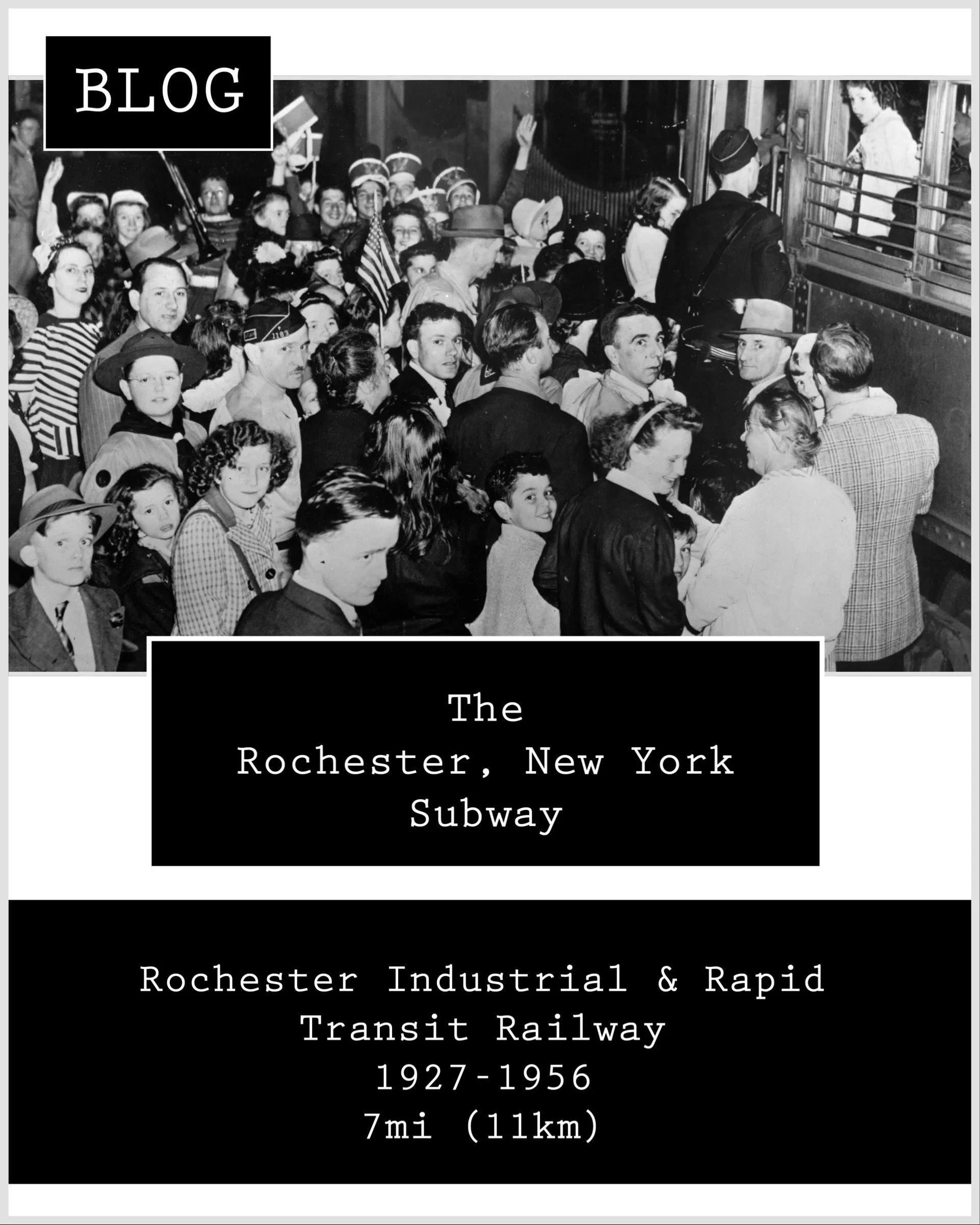A Subway in Rochester, New York???
Positioned along the shores of Lake Ontario, Rochester is located between Buffalo and Syracuse, on the former New York Central (now CSX) "Water Level Route." Today, Rochester is home to several high-technology corporations, among them Eastman Kodak, Bausch & Lomb, and Xerox. Before 1900, much of Rochester's economy was agrarian in nature. Formerly known as the "Flour City" due to the amount of mills that were located along the shores of the Genesee River, the "Flower City" blossomed into a sizable upstate industrial producer. The Erie Canal, responsible for much of upstate New York's economic growth, was considered an obsolete eyesore by the turn of the century. The state legislature allocated money for relocation of the canal, and the last boat traveled through the city locks in 1919. The city of Rochester then purchased the right of way for construction of a trolley subway that would greatly reduce the amount of surface traffic in the city. Eight years after the last canal boat was piloted through the city, the Rochester Industrial & Rapid Transit Railway was opened to the public in December 1927. Known to most simply as the "Subway," it was built to serve as an interchange for the five railroads that entered the city. It was also a link to interurban lines serving the east and west. The line was operated by New York State Railways, a subsidiary of the New York Central.
The subway was built to remove interurban traffic from the streets of Rochester. The Rochester & Eastern, which ran to Canandaigua and Geneva, entered the subway at Rowlands, and terminated at City Hall station. The Rochester & Syracuse connected with the subway near Winton Road and the connection with the NYC Auburn Branch. The R&S also terminated at City Hall station, and turned its cars at the nearby Oak Street loop. The Rochester, Lockport & Buffalo entered the subway from the west at Lyell Avenue, terminating at City Hall, and looping at Court Street. Only the Rochester & Sodus Bay had no physical connection to the new subway. Subway operation began in 1928, and the last Rochester interurban ceased operation in 1931. This left the subway and the surface lines as the remaining trolley operations in the city.
Electric freight service ended in 1957. The city of Rochester then drew up a contract with the five railroads to allow for the continuation of freight service in the remaining western end of the line. Much like Cincinnati’s tunnels, few traces of the subway survive. The section that was filled in remained undeveloped, and can be traced nearly uninterrupted all the way out to the former local General Motors plant.









